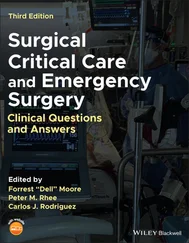1 1 Campbell, P.M. (1996). Troubleshooting central venous catheters in the emergency department. J. Emerg. Nurs. 22 (5): 416–419; quiz 419‐421.
2 2 Carde, P., Cosset‐Delaigue, M.F., Laplanche, A., and Chareau, I. (1989). Classical external indwelling central venous catheter versus totally implanted venous access systems for chemotherapy administration: a randomized trial in 100 patients with solid tumors. Eur. J. Cancer Clin. Oncol. 25 (6): 939–944.
3 3 Castagnola, E., Molinari, A.C., Giacchino, M. et al. (2007). Incidence of catheter‐related infections within 30 days from insertion of Hickman‐Broviac catheters. Pediatr. Blood Cancer 48 (1): 35–38.
4 4 Cesaro, S., Corro, R., Pelosin, A. et al. (2004). A prospective survey on incidence and outcome of Broviac/Hickman catheter‐related complications in pediatric patients affected by hematological and oncological diseases. Ann. Hematol. 83 (3): 183–188.
5 5 Chopra, V., Fallouh, N., McGuirk, H. et al. (2015). Patterns, risk factors and treatment associated with PICC‐DVT in hospitalized adults: a nested case–control study. Thromb. Res. 135 (5): 829–834.
6 6 Chopra, V., Ratz, D., Kuhn, L. et al. (2014). PICC‐associated bloodstream infections: prevalence, patterns, and predictors. Am. J. Med. 127 (4): 319–328.
7 7 Chow, L.M., Friedman, J.N., Macarthur, C. et al. (2003). Peripherally inserted central catheter (PICC) fracture and embolization in the pediatric population. J. Pediatr. 142 (2): 141–144.
8 8 Christianson, D. (1994). Caring for a patient who has an implanted venous port. Am. J. Nurs. 94 (11): 40–44.
9 9 Coles, C.E., Whitear, W.P., and Le Vay, J.H. (1998). Spontaneous fracture and embolization of a central venous catheter: prevention and early detection. Clin. Oncol. (R. Coll. Radiol.) 10 (6): 412–414.
10 10 Debets, J.M., Wils, J.A., and Schlangen, J.T. (1995). A rare complication of implanted central‐venous access devices: catheter fracture and embolization. Support. Care Cancer 3 (6): 432–434.
11 11 Duggan, C. (1995). Central venous catheters in the emergency department: access, utilization, and problem solving. Pediatr. Emerg. Care 11 (5): 322.
12 12 Dyer, B.J., Weiman, M.G., and Ludwig, S. (1995). Central venous catheters in the emergency department: access, utilization, and problem solving. Pediatr. Emerg. Care 11 (2): 112–117.
13 13 Greene, M.T., Flanders, S.A., Woller, S.C. et al. (2015). The association between PICC use and venous thromboembolism in upper and lower extremities. Am. J. Med. 128 (9): 986–993.e1.
14 14 Hendrickson, M.L. (1993). How to access an implanted port. Nursing 23 (1): 50–53.
15 15 Hogan, M.J., Coley, B.D., Shiels, W.E. 2nd et al. (1998). Recurrent deep venous thrombosis complicating PICC line placement in two patients with cystic fibrosis and activated protein C‐resistance. Pediatr. Radiol. 28 (7): 552–553.
16 16 Johansson, E., Hammarskjold, F., Lundberg, D., and Arnlind, M.H. (2013). Advantages and disadvantages of peripherally inserted central venous catheters (PICC) compared to other central venous lines: a systematic review of the literature. Acta Oncol. 52 (5): 886–892.
17 17 Kao, C.L. and Chang, J.P. (2002). Catheter fracture and embolization from an implanted venous access device. J. Emerg. Med. 22 (1): 95–96.
18 18 Larouere, E. (1999). Deaccessing an implanted port. Nursing 29 (6): 60–61.
19 19 Larouere, E. (1999). The art of accessing an implanted port. Nursing 29 (5): 56–58.
20 20 Wesley, J.R. (1992). Permanent central venous access devices. Semin. Pediatr. Surg. 1 (3): 188–201.
21 21 Yi, X.L., Chen, J., Li, J. et al. (2014). Risk factors associated with PICC‐related upper extremity venous thrombosis in cancer patients. J. Clin. Nurs. 23 (5–6): 837–843.
22 22 Yukisawa, S., Fujiwara, Y., Yamamoto, Y. et al. (2010). Upper‐extremity deep vein thrombosis related to central venous port systems implanted in cancer patients. Br. J. Radiol. 83 (994): 850–853.
23 23 Zochios, V., Umar, I., Simpson, N., and Jones, N. (2014). Peripherally inserted central catheter (PICC)‐related thrombosis in critically ill patients. J. Vasc. Access 15 (5): 329–337.
6 Vascular Access for Hemodialysis
Sarah Fesnak1,2, Xenia Morgan3, and Kimberly Windt3
1 Perelman School of Medicine at the University of Pennsylvania, Philadelphia, PA, USA
2 Division of Emergency Medicine, Department of Pediatrics, Children’s Hospital of Philadelphia, Philadelphia, PA, USA
3 Hemodialysis Unit, Division of Nephrology, Children’s Hospital of Philadelphia, Philadelphia, PA, USA
Hemodialysis is a procedure to regulate fluid status and remove waste products and/or toxic substances from a patient's blood. Vascular access allows a patient's blood to be circulated extracorporeally through a dialysis machine, where it filters past a semipermeable membrane in contact with a washing solution (diasylate). Fluid and solutes are removed via diffusion, osmosis, and convection. Hemodialysis is one of three forms of renal replacement therapy (the others are peritoneal dialysis and renal transplant) available to patients with advanced renal failure. Patients may require hemodialysis on a long‐ or short‐term basis, depending on their underlying disease process and potential for transplant, with many patients undergoing years of dialysis. Nearly 300 000 patients in the US have end‐stage renal disease, and more than 60% of these undergo hemodialysis. The vast majority of these patients are adults, with fewer than 1% of hemodialysis patients under age 20 years. In both pediatric and adult patients, however, complications of vascular access remain a significant source of morbidity and mortality.
All forms of vascular access in hemodialysis allow blood to be pumped from the patient through the dialysis machine and back into the patient in a closed circuit. This circulation requires large‐caliber access for rapid circulation of patient's blood volume. There are several options for short‐ and long‐term vascular access in patients requiring hemodialysis.
These are large‐bore double lumen central venous catheters. Benefits of this type of access are that it can be placed rapidly and used immediately after placement and does not require any additional needle sticks for use. Drawbacks of this form of access include the risk of infection, potential for the catheter to become dislodged or removed inadvertently, and long‐term risk of vascular stenosis.
Nontunneled hemodialysis catheter: This is a short‐term form of access that can be placed emergently for acute use or to bridge to a longer‐term access option. It is typically placed in the internal jugular (<3 weeks) or femoral veins (<5 days) and then stitched into place.
Tunneled hemodialysis catheter: This is a long‐term tunneled and cuffed central venous catheter, typically placed in the right internal jugular vein, but may be placed femorally. It may be kept in place for years ( Figure 6.1).
These forms of access are surgically created anastomoses of the arterial and venous system used for hemodialysis. Venipuncture is used to access the anastomosis at each dialysis session. Benefits of these forms of access are decreased risk of infection as compared with central venous catheters and long use life. Note that the risk of infection remains higher in graft. Drawbacks include potential for thrombosis at the anastomosis, delay between placement and maturation/use, need to use needle sticks to access at each use, and potential cosmetic issues.
Читать дальше












